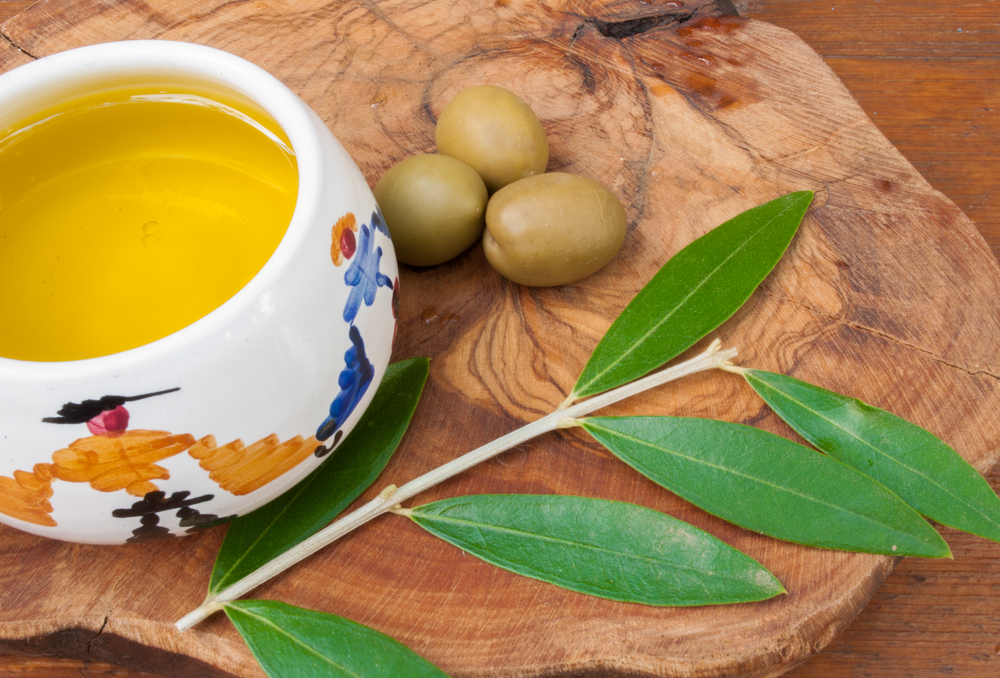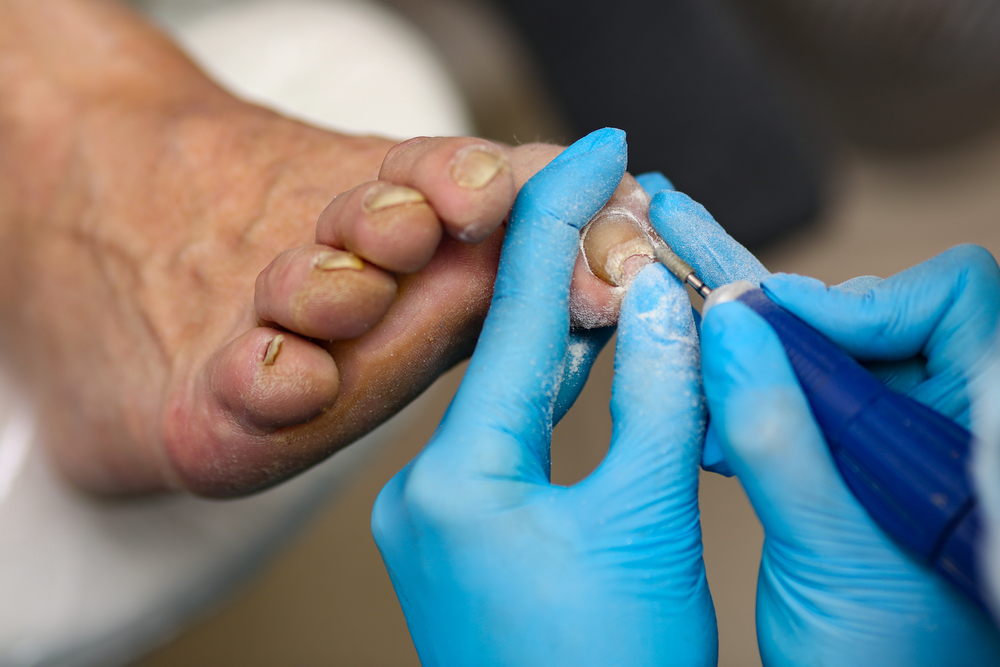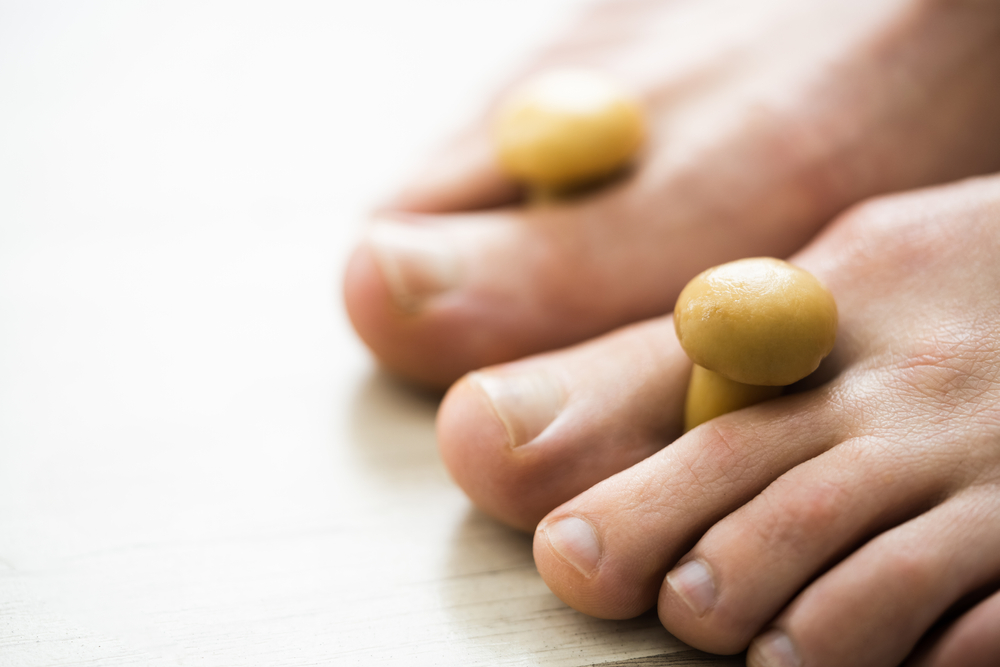To avoid toenail fungus, follow these tips. Clean your feet daily, change your shoes and socks frequently, and clip your toenails straight across. Always wear socks made of synthetic fiber, as this wick away moisture faster than cotton socks and can prevent the fungus from growing. You should also change your socks at least once a week. Here's a simple way to get started.
Table of Contents
Snakeroot extract

The use of snakeroot extract for toenail fungi is an ancient Mexican practice. The extract comes from the Ageratina pichinchensis plant, which contains antifungal properties. The extract is available in drops or tubes for topical application. There is very little research to support the effectiveness of snakeroot extract as a treatment for toenail fungus. There are side effects associated with using snakeroot extract, but the benefits outweigh the risks.
Although many people have tried snakeroot extract for toenail fungi, it doesn't have the same effectiveness as antifungal drugs. Although the treatment of toenail fungus with snakeroot extract is considered safe, it can take a while to show positive results. If your toenail fungus is very severe, you may need to consult a dermatologist for further information about the right treatment options.
To apply snakeroot extract for toenail fungi, you can buy snakeroot extract at health food stores or online. In order to use it, you must prepare a paste of chopped snakeroot leaves with water. Apply it to the affected nail twice daily. It will cure the infection in 71.1 percent of the cases. This treatment is effective if you keep the feet dry and clean. Snakeroot extract also helps prevent the fungus from returning.
Olive oil has been used in folk medicine for centuries for its medicinal benefits. Its active ingredient, “oleuropein,” is known for its antifungal and antibacterial properties. Various essential oils, including garlic, have been shown to be effective in treating toenail fungus. Several essential oils are widely used in aromatherapy, and can be applied to the affected nail. If a topical application is ineffective, a homemade remedy may be the way to go.
Vicks VapoRub
You've probably heard of Vicks VapoRub for toenail fungus, but how exactly does it work? The Vicks vaporub can be applied to the infected nail using a spoon or a disposable earbud. But you need to be careful when applying it because it can be contaminated if you use your finger to apply it. The best way to apply Vicks is to apply it to the infected nail from beneath the cuticle. Make sure that you apply it thoroughly, and cover the affected area with a sock or bandage.
The ingredients in Vicks VapoRub are unlikely to harm an unborn baby. However, you should always remember to wash your hands before applying the vaporub, and do not leave it out in public for children under two. This topical treatment may take anywhere from four to eight months to work, so you should be patient. If your symptoms do not improve within this time, you should consult a doctor or dermatologist.
Topical treatment such as Vicks VapoRub may not work, but it can help. Although it's not FDA-approved, some studies show that Vicks VapoRub can effectively treat toenail fungus. The Journal of the American Board of Family Medicine published a clinical study on the use of Vicks VapoRub for toenail fungus, which involved 18 patients.
There are many prescription medications available, including Lamisil and other antifungal medicines. But many of these medications have side effects and must be taken for several months to see any visible improvements. Many other drugs may interfere with Vicks VapoRub for toenail fungus. Even prescription medications aren't 100% effective. Even doctors admit that toenail fungus is a difficult condition to treat and that most people should avoid using Vicks VapoRub unless absolutely necessary.
Olive leaf extract

One natural remedy that can be applied to the affected toenails is olive leaf extract. This substance has both antifungal and antibacterial properties. In fact, it has been shown to be effective against the fungus Candida albicans. However, the effectiveness of olive leaf extract for toenail fungus has yet to be tested. In addition, there are no high-quality trials that have been performed on this product.
There are two main types of olive leaf fungus treatments. The first one involves applying a poultice of olive leaf on the affected toenail. It is very effective for treating toenail fungus, especially if you apply it two or three times a day. It is recommended to use a cotton ball when applying the tincture, which helps in the absorption of the product. You may notice that the color of your nail turns green after applying the tincture, but it goes away after a while.
The second method involves taking olive leaf extract. It has been shown to work well for a variety of skin blemishes and acne. This natural remedy helps the body rebuild its lining, improve digestion, and improve blood circulation. It also reduces the workload of the immune system, freeing it up to fight external allergens. As a bonus, olive leaf extract is also an excellent way to get rid of toenail fungus.
Another natural remedy for toenail fungus is garlic, which has antifungal properties. Most people apply chopped garlic to the infected nail for 20 to 30 minutes a day. However, garlic may be irritating to the skin and can leave a foul smell. In addition, garlic oil does not dissolve well in water. The other method is to apply prepared garlic oil to the affected nail.
Using mouthwash to treat toenail fungus
If you're suffering from toenail fungus, using mouthwash can be beneficial. While conventional medications only cure about 70% of cases, they often have unpleasant side effects. The medications have been linked to heart problems, liver disease, and kidney damage. They're also not a good choice if you have an immune deficiency disorder. If you'd like to know more about the effectiveness of mouthwash for toenail fungus, read on.
Listerine contains Eucalyptol, an antibacterial and antifungal. Its other ingredient, Salicylate, is related to aspirin. Salicylate was originally used as an antiseptic in the 18th century but was later sold as a floor decontamination solution and for treating gonorrhea. Listerine's advertising even coined the term “halitosis,” which is the condition that causes bad breath. While Listerine may be effective, it should not be used as a treatment for toenail fungus.
Listerine is another popular over-the-counter toenail fungus treatment. It contains natural ingredients such as menthol and eucalyptus oil. It can be applied to the toenails twice daily and can be highly effective for up to 48 weeks. Despite the lack of scientific evidence for the effectiveness of Listerine, it does offer some hope for those suffering from toenail fungus. Moreover, tea tree oil also has antifungal and antiseptic properties. Although not an ideal treatment, it may be effective for mild fungal infections.
Vinegar is another effective treatment for toenail fungus. The acidic content of vinegar kills the fungus by inhibiting the growth of unwanted fungi. A few tablespoons of apple cider vinegar mixed with water daily will provide some relief. Its effects on toenail fungus, however, remain unclear. Although it is a natural remedy, it may be less irritating than a Listerine foot soak.
Permanent toenail removal

If you're sick of having yellow, crumbly, thick toenails, you may want to look into the permanent removal of toenail fungus. This procedure works by destroying the nail matrix – the layer of the nail that produces keratin. This procedure may be necessary if your infection is severe, or if your nail has developed scar tissue. Your podiatrist will remove the nail matrix either surgically or with a chemical.
Laser therapy is one of the safest and most effective methods for removing toenail fungus. Laser treatment requires only one session, although more severe cases may require more than one session. Most patients report complete fungus removal after one treatment, but if you don't want to undergo laser treatments, you can use topical treatments to prevent the fungus from growing back. Laser therapy is highly effective and has a high success rate.
Your first step in determining the source of your problem is to visit a doctor. Your doctor will examine your toenail, collect nail clippings, and scrape debris under the nail. These samples will be sent to a laboratory for testing to determine the type of fungus. The symptoms of toenail fungus can mimic those of psoriasis, yeast infections, and even diabetes. Identifying the exact source of your symptoms is critical for a proper treatment plan.
Another method of treatment for toenail fungus is soaking the feet in diluted bleach. However, this method can cause chemical burns if used improperly. Furthermore, some studies show that the effects of bleach treatments can take up to a year. However, some patients may experience a recurrence of their fungal infection after treatment. If this is the case, a trip to the podiatrist will likely be necessary.


Leave feedback about this